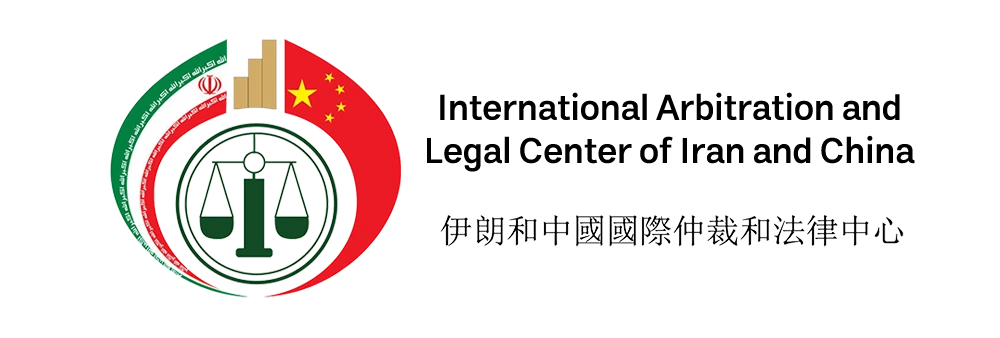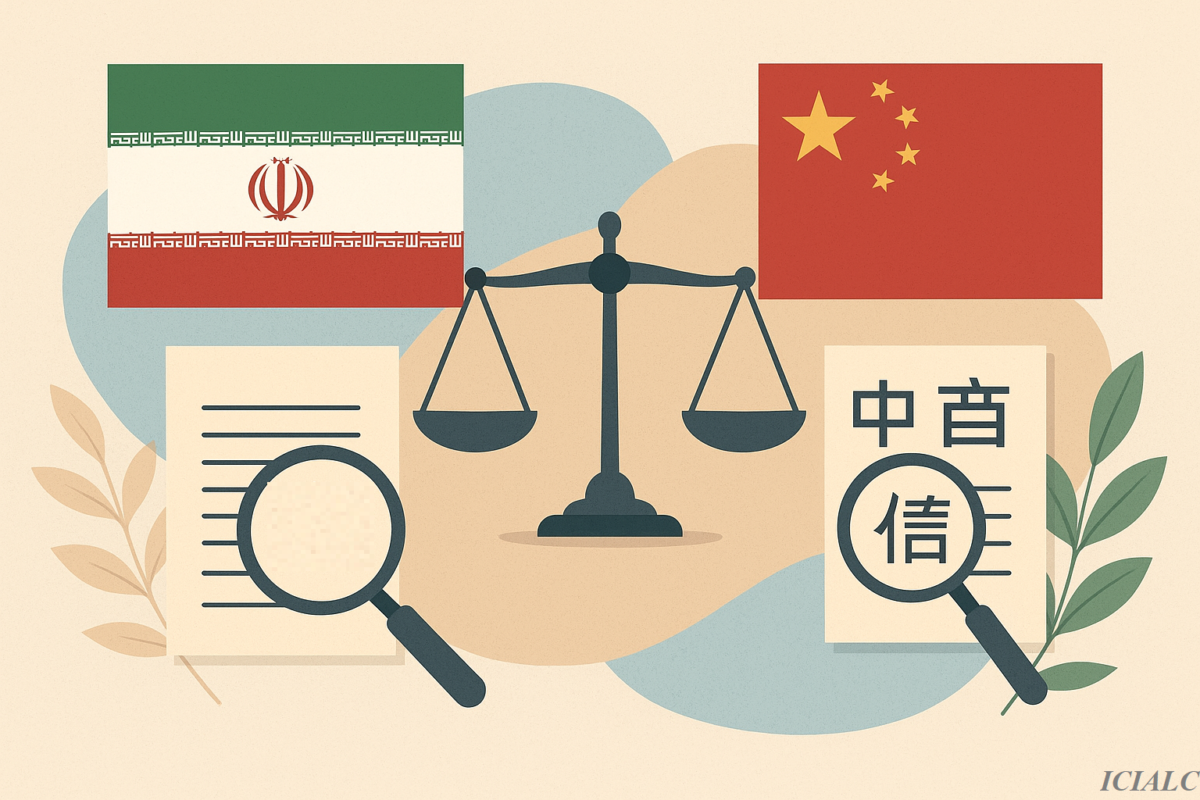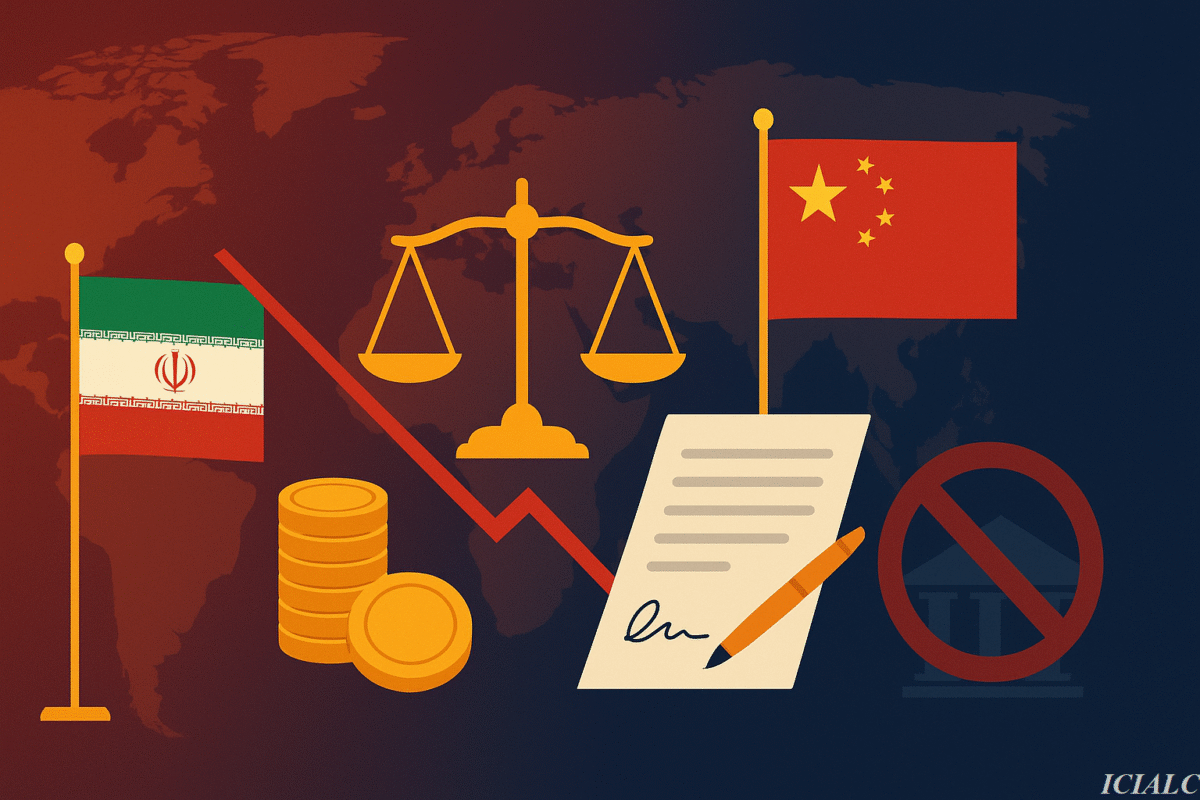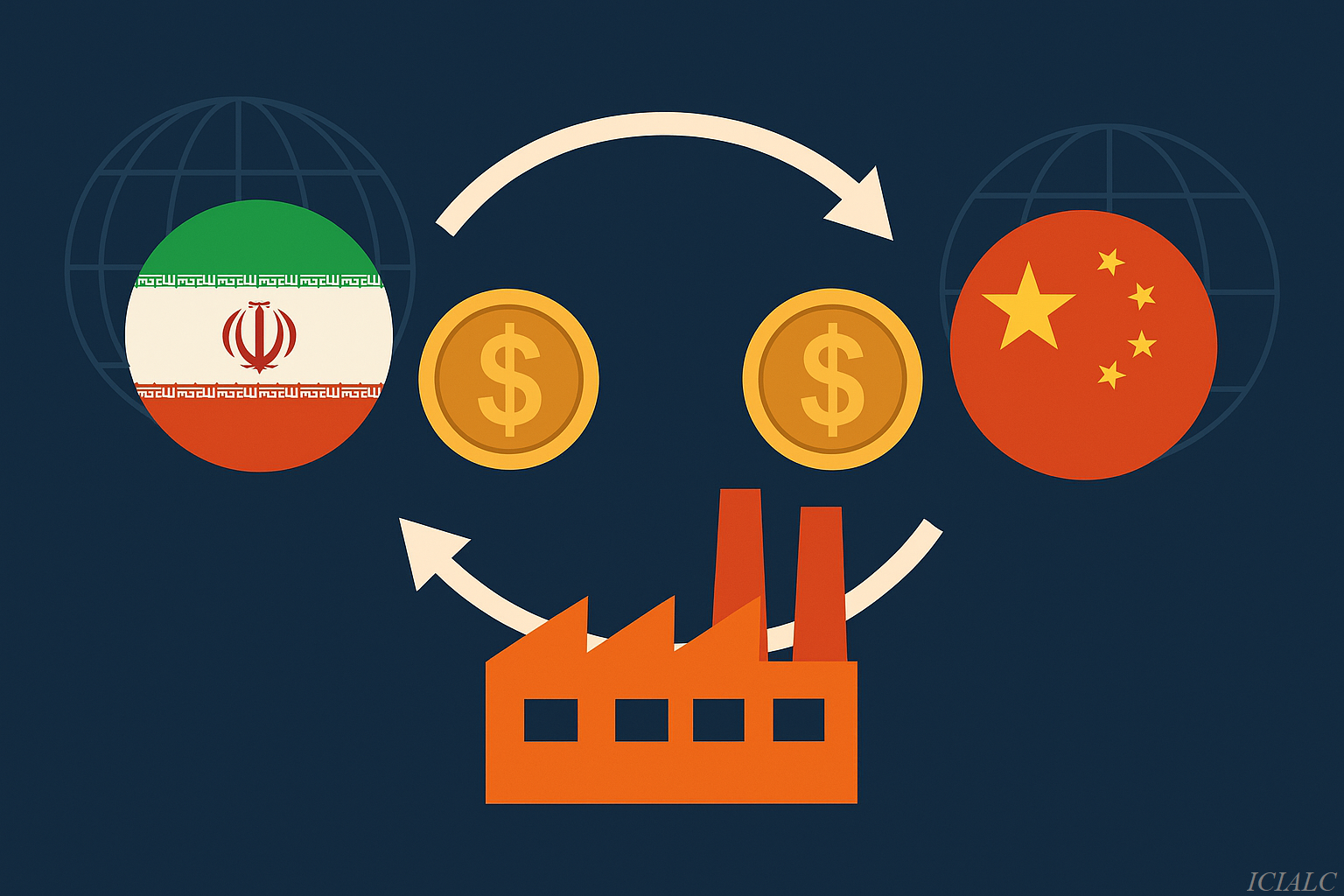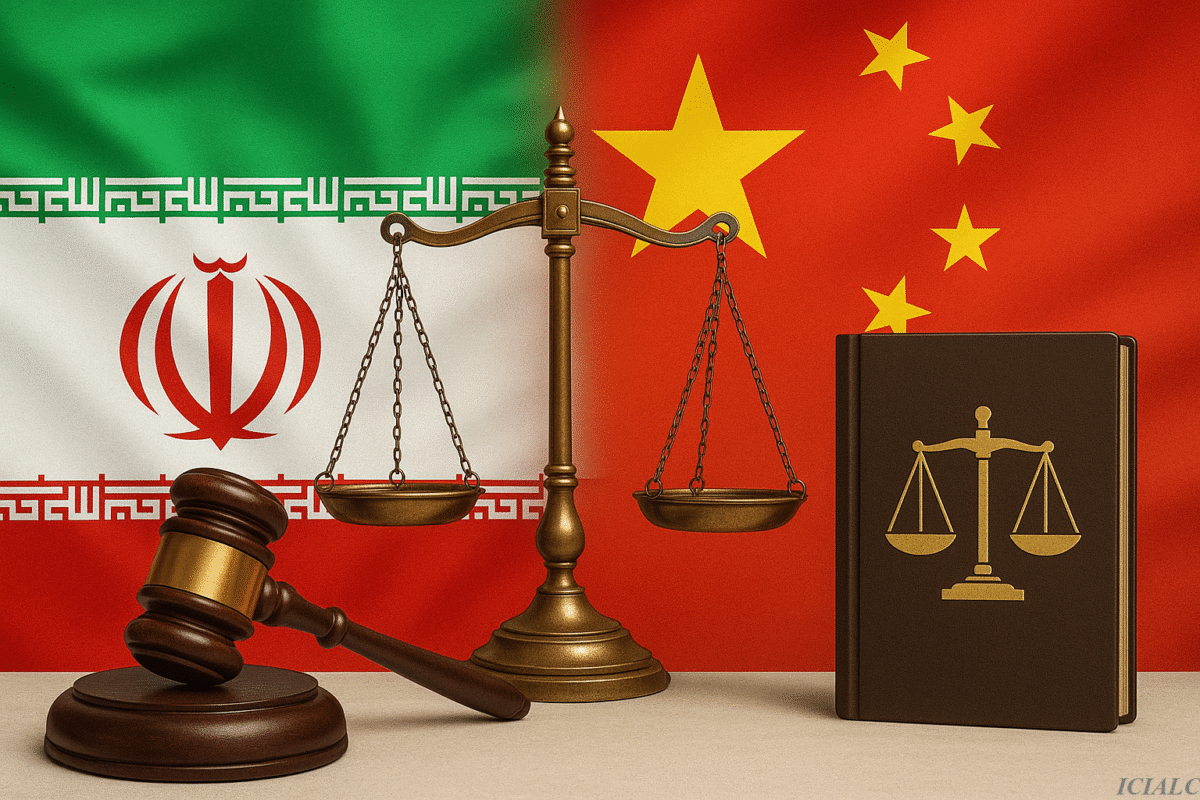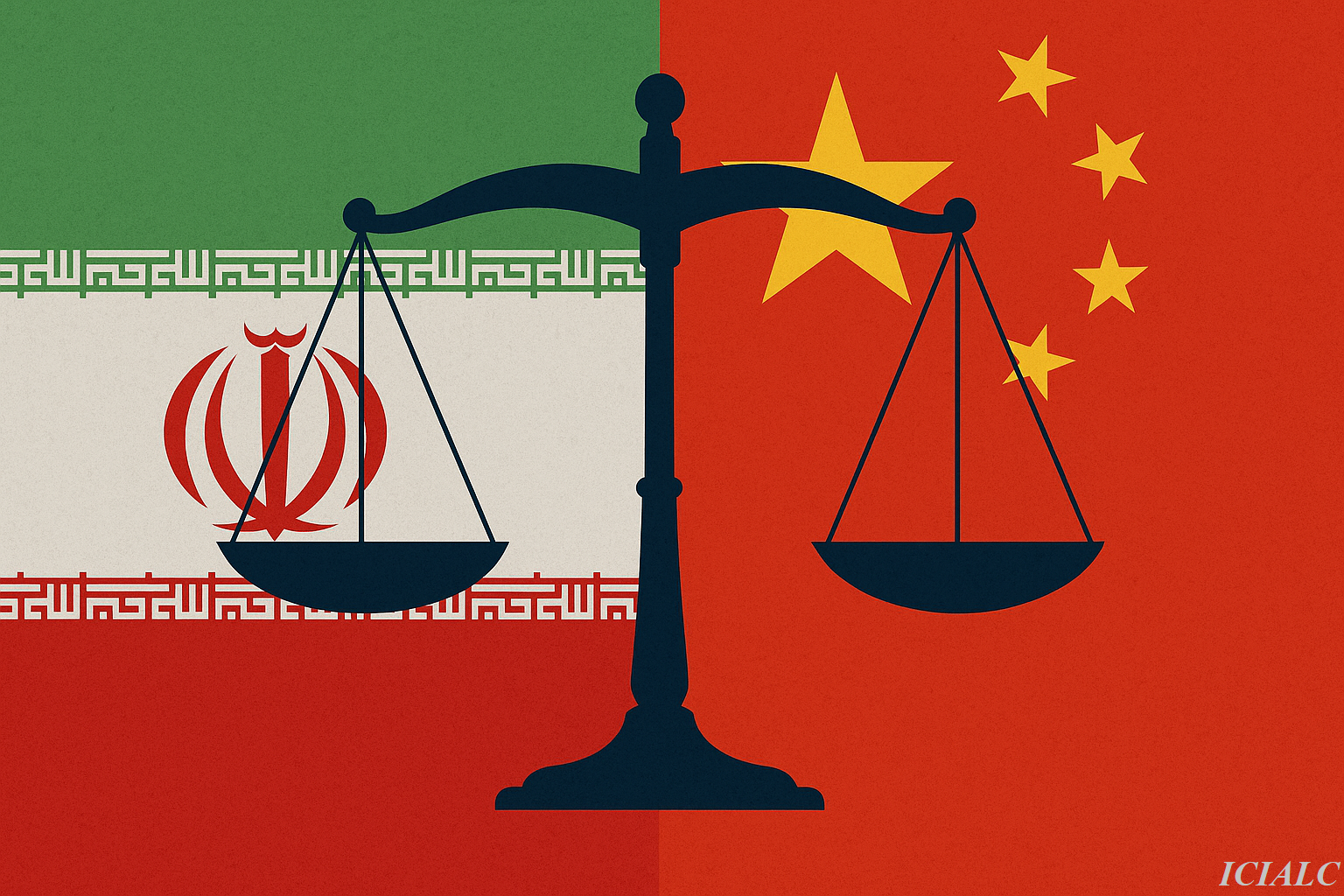Over the past decades, trade relations between Iran and China have consistently expanded, and today China is recognized as one of Iran’s principal trading partners. The large volume of imports of industrial goods, spare parts, electronic equipment, and even consumer products from China, alongside Iran’s exports of raw materials, petrochemicals, and agricultural products, constitutes a significant portion of bilateral trade exchanges.
However, it is important to note that the expansion of trade does not equate to a reduction of risk; indeed, as economic relations become more complex, legal risks become more pronounced. Disputes over contractual provisions, complications arising from legal translations, sudden changes in customs regulations, international sanctions, and even disagreements regarding the enforcement of arbitral awards or court judgments are only some of the obstacles that can turn a profitable transaction into a financial and legal crisis.
Accordingly, a precise understanding of the legal risks associated with imports and exports between Iran and China is indispensable for any trader, businessman, or even multinational company. Experience has shown that many costly and protracted disputes could have been avoided if, from the outset, contracts had been drafted with proper precision, the governing law had been correctly chosen, and appropriate legal advice had been obtained.
This article seeks to examine the most significant legal risks involved in Iran–China trade and, thereafter, to propose practical solutions for mitigating such risks, thereby enabling Iranian traders and investors to enter into economic dealings with China in a more informed manner.
Major Legal Risks in Iran–China Trade

Although the economic relationship between Iran and China provides numerous opportunities for traders and investors, these transactions are not devoid of challenges. In fact, every international transaction entails not only advantages but also a host of legal risks which, if ignored, may jeopardize the entire process of cooperation. In the context of trade between Iran and China, such risks generally arise in the form of vague contractual terms, disputes concerning the governing law, difficulties in enforcing arbitration awards and court judgments, sudden regulatory changes, and, most importantly, the impact of international sanctions. Identifying these risks and preparing to manage them constitute the first steps toward establishing sustainable and successful cooperation between the parties.
Contractual Risks
One of the foremost challenges for Iranian and Chinese traders lies in deficiencies in the drafting of commercial contracts. Many agreements are drawn up without due regard for the legal, cultural, and linguistic differences between the two countries, which later gives rise to significant difficulties when disputes emerge. For example, if contractual provisions are drafted in general or ambiguous terms, or if the obligations of the parties are not set out with sufficient clarity, divergent interpretations of the agreement will inevitably ensue. The issue of language and legal translation is also of great importance, as even a minor translation error can completely alter the legal meaning of a contractual clause. Another frequently overlooked point is the determination of the governing law of the contract. Failure to specify from the outset which country’s law governs the contract leads to substantial uncertainty and confusion in the event of a dispute.
Risks Related to Arbitration and Litigation
The mechanism for dispute resolution in international contracts is always a crucial issue, and in Iran–China trade, it assumes even greater significance. Although both countries are signatories to the New York Convention and are, in theory, obliged to recognize foreign arbitral awards, in practice the enforcement of such awards may be hindered by administrative and legal obstacles. Additionally, judgments rendered by Iranian and Chinese courts are not directly enforceable in the other country, as no comprehensive judicial cooperation treaty exists between them. Consequently, traders may have to pursue lengthy and costly proceedings in domestic courts in order to enforce their rights. Moreover, litigation in both jurisdictions can be burdensome for businessmen, both financially and in terms of time.
Risks Pertaining to Regulations and Licensing
Another serious risk stems from the frequent changes in the trade laws and regulations of both countries. For instance, a commodity may be subject to a particular customs tariff at the time of contracting, but its tariff may change by the time of clearance, thereby imposing unforeseen expenses. Further, currency and banking restrictions constitute a major obstacle to financial transactions between Iran and China. Divergences in quality standards and statutory requirements in respect of safety, packaging, or health certification sometimes prevent Iranian or Chinese goods from entering the destination market, or cause lengthy delays in clearance procedures.
Risks of Sanctions and International Restrictions
The impact of international sanctions on Iran’s trade with any country is undeniable, and China is no exception. Many major Chinese banks and corporations, fearing the consequences of cooperation with Iran, prefer not to engage in direct transactions. This situation compels Iranian traders to rely on intermediaries and third-party companies for financial and logistical operations. However, reliance on intermediaries gives rise to additional legal risks, as in cases of dispute or fraud, the determination of liability and legal redress becomes more complex. Accordingly, sanctions constitute one of the most challenging legal risks in Iran–China trade.
Legal Consequences of These Risks for Traders

Disregarding legal risks in Iran–China trade can impose serious consequences on traders. The primary effect is a considerable increase in financial and temporal costs, as the resolution of disputes in courts or even arbitration centers requires significant expenditure of resources. In addition to cost, suspension or even annulment of contracts is a frequent result of neglecting such risks. This not only eliminates the parties’ financial interests but may also disrupt trade relations for an extended period. Beyond these outcomes, the most severe damage is often to commercial reputation. When legal disputes between Iranian and Chinese traders become public or are prolonged, the counterparty’s trust diminishes, and future cooperation is placed in serious doubt.
Strategies for Reducing Legal Risks
In managing legal risks in Iran–China trade, prevention remains the best and least costly approach. The first step is the drafting of precise and unambiguous contracts. Such contracts should be drawn up bilingually (in Persian and Chinese or English), and their translations should be carried out by certified translators with expertise in legal terminology, in order to avoid misunderstandings. The next step is determining the proper method of dispute resolution. Experience has shown that referring disputes to international arbitration, or to reputable arbitral institutions in Iran and China, significantly accelerates and improves the settlement of issues.
Furthermore, recourse to specialized legal counsel familiar with both Iranian law and Chinese regulations is an essential necessity. The presence of such experts alongside traders can prevent numerous difficulties. Another important measure is conducting due diligence on the counterparty’s commercial background before entering into a contract; by investigating the party’s professional record and credibility, the likelihood of future disputes can be substantially reduced. Collectively, these practical measures, although simple, can play a decisive role in mitigating legal risks and enhancing the prospects of success in international trade.
The Role of Arbitration and Legal Institutions between Iran and China
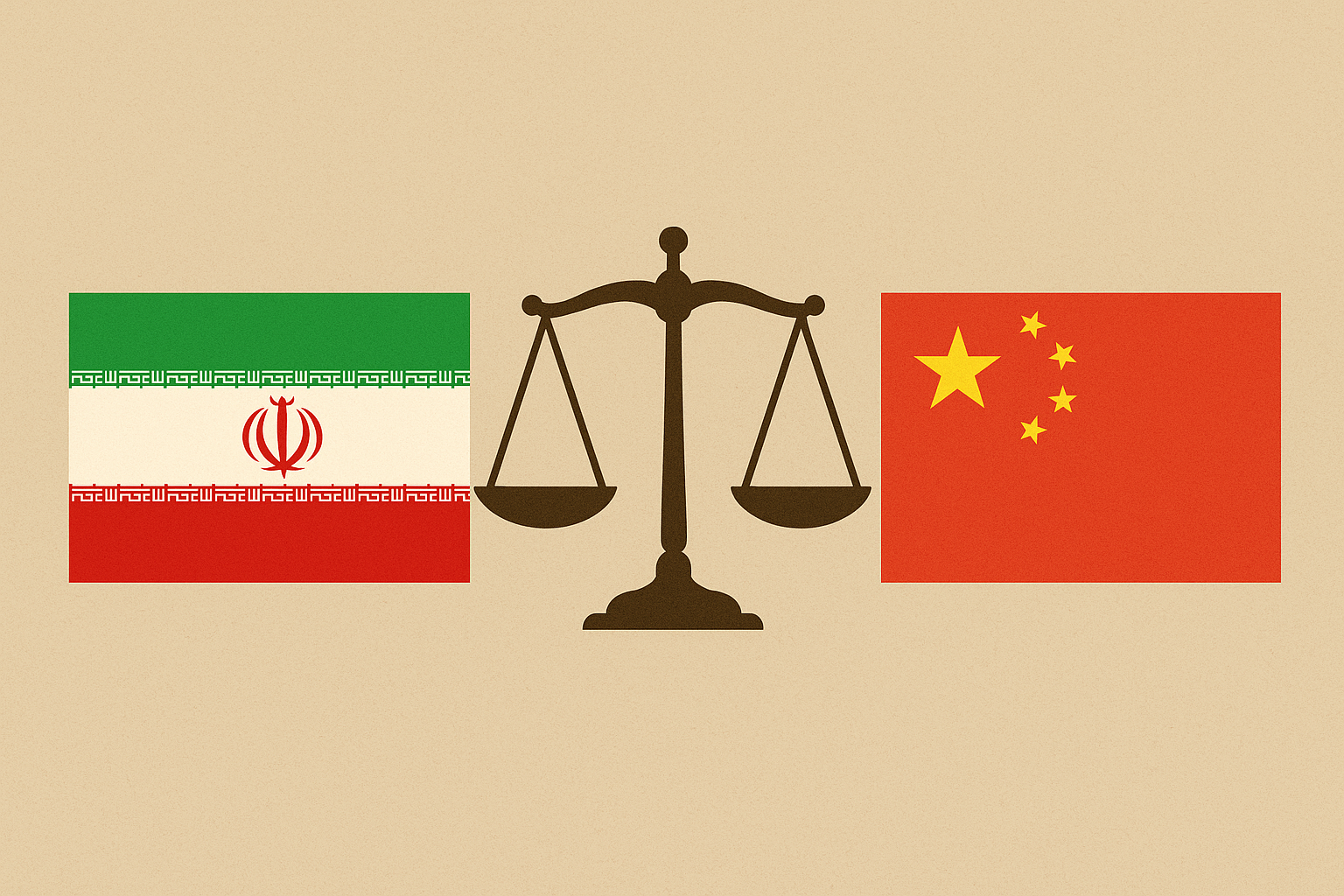
One of the most effective tools for resolving disputes in international trade is recourse to reputable arbitral institutions. In China, institutions such as CIETAC (China International Economic and Trade Arbitration Commission) hold a prominent position among traders and foreign companies, and due to their international recognition, they conduct arbitral proceedings with greater efficiency and transparency. Additionally, where parties prefer arbitration outside Iran and China, recourse to international institutions such as the ICC (International Chamber of Commerce) can provide a reliable alternative. The correct choice of arbitral forum not only facilitates dispute resolution but also prevents lengthy proceedings and excessive costs.
Conclusion and Practical Recommendations
Trade between Iran and China presents vast opportunities for business development and increased profitability for Iranian traders, but these opportunities are invariably accompanied by legal risks. If such risks are disregarded, they can yield severe consequences for both parties. The best way to reduce these risks is through careful contractual drafting, clear determination of the governing law, selection of a reputable arbitral forum, and engagement of specialized legal counsel. Traders must remain mindful that the expenses incurred for legal risk management constitute a long-term investment, for they not only prevent costly disputes but also enhance trust and commercial reputation in the Chinese market. In other words, legal risk management is the key to sustainable success in Iran–China trade.
